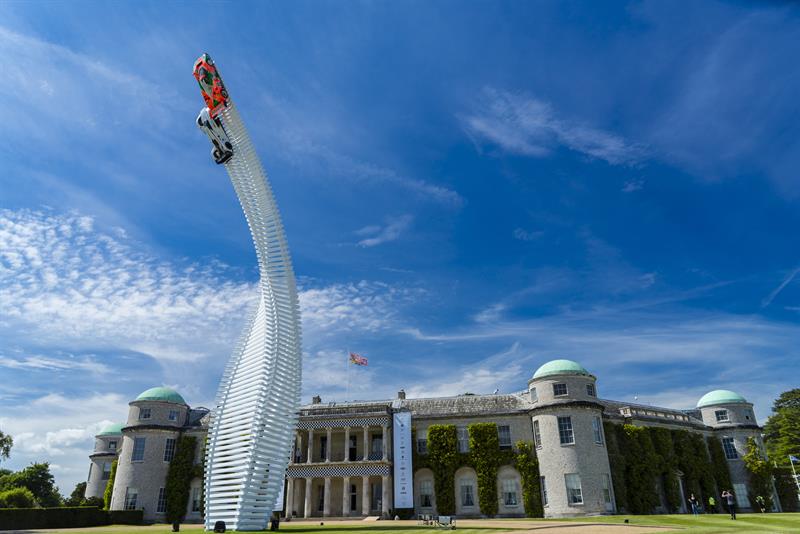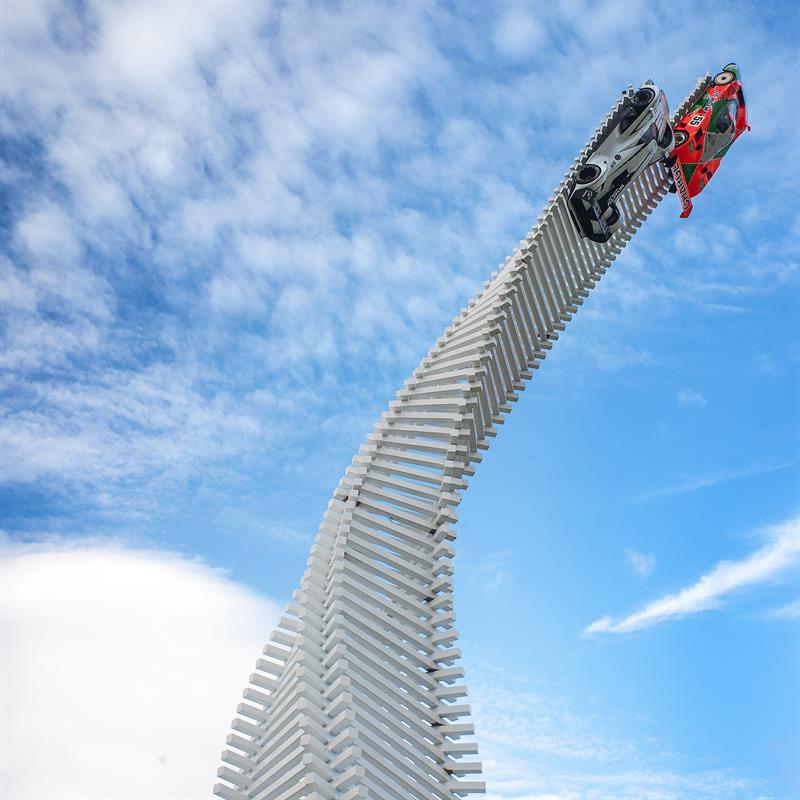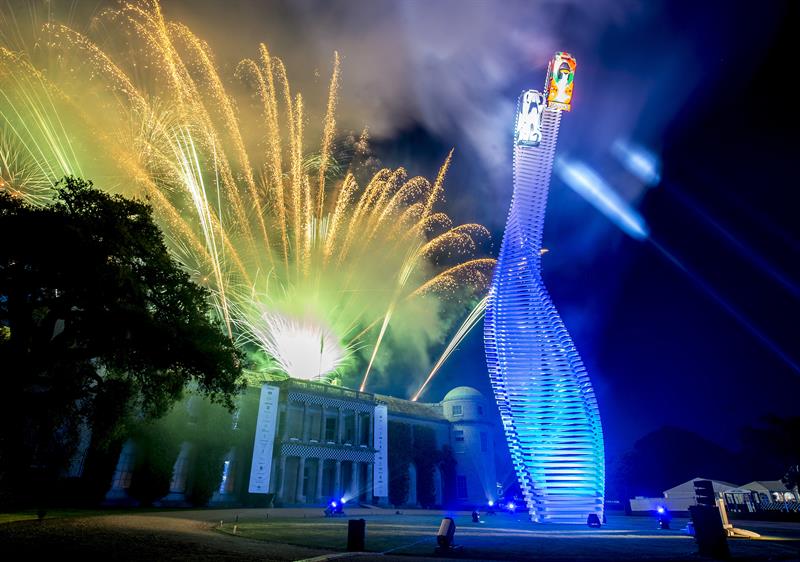Bruno Postle, Capita's lead designer on the project explained: "The sculpture itself was basically a stack of logs, one layer on top of another, and was inspired by Japanese architecture. Each beam and every location hole needed to be put in exactly the right place or the structure wouldn't have been able to support itself."
For the last 11 years Capita's property and infrastructure business, alongside artist Gerry Judah, has provided the sculpture that stands on the grounds of Goodwood House during the festival.
The sculpture, funded by Mazda, weighed 120 tonnes and was built from 720 mild steel beams, stacked 40m high to where the cars were suspended. Laid end to end the beams would stretch 1,235m, the same length as the Goodwood hill climb track. The top of the structure, where the cars were seated allows for deflection in high winds of 100mm.
Judah said: "Usually, the one thing you never do with steel is to twist it, so this year we had an impossible challenge to find a way of corkscrewing the entire structure, and we succeeded with an elegant and graceful system that showed off the elegance and grace of the cars themselves."

Usually, on a project like this a profile is cut into each beam so they slot together easily. However, as the brief required the beams to form a helix-style twist the design team had to come up with a less conventional way of fixing them together; rather than cutting profiles into the beams to slot them together, the beams were stacked on top of each other with alignment holes and locating pins and welded around the perimeter of the contact area.
The sculpture paid homage to Mazda's racing success by including the 787B, the first and only Mazda ever to win the Le Mans 24 hour endurance race, and the LM55 concept car that was designed for the computer game Gran Turismo 6 and was specifically manufactured for this sculpture. The LM55 pays homage to the 1991 Le Mans winning car, 55 being the number worn by the 787B.
Postle has worked on all of the last 11 sculptures. He said that the project was proposed by Mazda in April 2014, with "dozens and dozens of iterations" being produced until the final design was agreed upon in February 2015. A team from Littlehampton Welding began cutting the beams in March and the sculpture itself was finally put together in three weeks, ready to be displayed at the Festival of Speed.
Postle used a range of design software, including AutoCAD, SketchUp and Blender, to code the scripts for each of the 720 components that make up the structure and the ways in which they were to be joined together to provide the optimal structural support. The final analysis of the project was done in Graitec Advance Design.

Postle said:"The final design was created entirely by defining four 3D splines in AutoCAD, then a series of custom Perl scripts generated everything else – basically we wrote the software we needed to do the job."
His three-man team tried many variations of twist types as well as having as many as four MX5production cars suspended on the structure. However, Postle's team and Judah decided not to use these standard road cars, choosing the race cars instead.
"There's always pressure to make each year's sculpture bigger than the year before. People said we couldn't beat last year's design," Postle said, referring to 2014's sculpture celebrating 120 years of Mercedes-Benz motorsport featuring an arch that travelled over Goodwood house that featured Lewis Hamilton's 2013 F1 car and a replica of the 1934 W25 which raced at the Nurburgring. "But this year's was different. It was more sculptural and involved more architecture in its design. It's been a big success, it was spectacular."
After the four day event the structure is to be dismantled over a period of two weeks, all the welds will be ground out and the material will either be reused or scrapped. The team will then be ready to begin the process of designing next year's sculpture.






